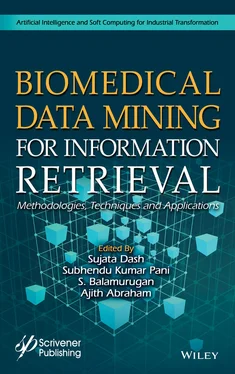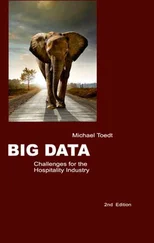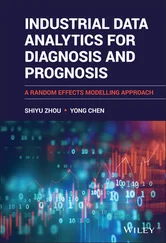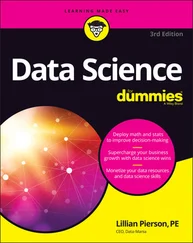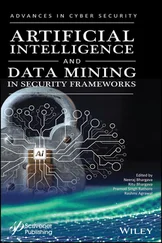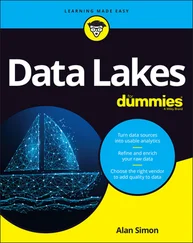5 e) To determine drug efficacy by relative comparison of same set of genes in control and treated with a particular drug.
In case of medical and clinical diagnostics study of gene expression plays a very important role, as any change be it under-expression, over-expression or loss of function plays a role in various disease etiology. So, it is really important to equip our clinicians, pathologist and the researchers with such advanced computing devices to come to a valid and informed conclusion related to disease condition. Such result interprets health data arising from a large set of unstructured data form for example the identification or forecasting of a disease state.
AI interpretation tasks related to clinical aspect can be grouped into various classes of which includes computer vision, time series analysis, speech recognition, and natural language processing. Each of these problems is well suited to address specific types of clinical diagnostic tasks [20].
1 a) Computer vision is useful for the interpretation of radiological images; time series analysis is useful for the analysis of continuously streaming health data such as those provided by an electrocardiogram [21].
2 b) Speech-recognition techniques can be used for detection of neurological disorders [22].
3 c) AI-based natural language processing can be helpful in the extraction of meaningful information from electronic health record (EHR) data [23].
4 d) These techniques also aid in analysing areas which are not very obvious such as regulation of genome.
AI aided systems can identify functional regulatory elements present in the human genome, where they can be used to identify recurrent motifs in DNA sequences in a manner analogous to that in which pixel patterns are detected in images by convolutional neural networks [24] AI algorithm deep learning is able to interpret features from large and complex datasets by using deep neural network architectures. Neural networks are computational systems of artificial neurons (also called ‘nodes’) that transmit signals to one another, often in interconnected layers as neurons in a human body do. In such computational systems there are layers known as hidden layers which are not the input or the output layer. A deep neural network consists of many hidden layers of artificial neurons. Neural networks often take as input the fundamental unit of data that it is trained to interpret: for example, pixel intensity in images; diagnostic, prescription, and procedure codes in EHR data; or nucleotide sequence data in genomic applications [25]. A multitude of these simple features are combined in successive layers of the neural network in a lot of ways, as designed by the human neural network architect, in order to represent more sophisticated concepts or features of the input health data. Ultimately, the output of the neural network is the interpretation task that the network has been trained to execute. For example, successive layers of a computer vision algorithm might learn to detect edges in an image, then patterns of edges that represent shapes, then collections of shapes that represent certain objects, and so on. Thus, AI systems synthesize simple features into more complex concepts to derive conclusions about health data in a manner that is analogous to human interpretation, although the complex concepts used by the AI systems are not necessarily recognizable or obvious concepts to humans.
2.5 Role of Computation in Protein Structure Prediction
There are various critical and important processes and materials like personalized medicine, gene pathway, determination organs functioning, gene therapy, vaccine and drug development etc. Nowadays bioinformatics has been extensively used for the development of artificial intelligence. It also comprises softwares & programming for prediction of structure of protein however, it is still difficult to find the structure of a protein.
The two most powerful approaches are being used for determining protein structure .These are Nuclear Magnetic Resonance and X-ray crystallography but these are too expensive & time consuming which are disadvantages associated with these techniques.
Recent advancement for getting precise & fine protein structure a powerful technique has been introduced named cryo-electron microscope (Cryo-EM). This revolutionary technique predicts high resolution large scale molecular structures. The principle of this approach is mainly used in machine learning & artificial intelligence. For interpretation of cryo-EM maps, machine learning & artificial intelligence are extensively used [26–29].
Many liquid proteins cannot be crystallized. Getting Cryo-EM map crystallization of protein is mandatory. The solution of this problem can be done by AI which gives remedy for sequencing of protein without its crystallization.
Artificial intelligence has numerous programmes which are trained enough to give enormous information on atomic features of protein like: bond angles, bond length, type of bonds, physical-chemical properties, bond energy, amino acids interaction, potential energy etc. Artificial intelligence is used for image recognition [30, 31]. It helps in giving precise, broad and accurate thousands of protein structure [32, 33].
In this way these programmes suggest prediction model outputs which can be compared to the known crystal structures. There are several events organized for prediction model for protein.
Critical Assessment of Structure Prediction (CASP) is an annual gathering for comparison of protein structures by various models to assess the quality of the model and find the most accurate model making it the important milestone for protein structure prediction for multiple applications.
MULTICOM: in every two years all over the world researchers submit predicted protein structure while deep learning (Machine Learning) has been applied to make protein structure prediction with help of protein contact distance prediction. Professionals analyze the performance of these methods [34] and decide on the best models.
2.6 Application in Protein Folding Prediction
Understanding protein folding is inherent to understanding its function and its heterogenous nature. Cellular function is incomplete without proteins be it replication, transcription and translation, thus prediction of 3D or folded protein structure becomes very important to address various questions of molecular biology. Earlier various molecular biology techniques were used for determination of protein folding which was time consuming. The discovery of new protein sequences has been accelerated by next-generation sequencing techniques due to these methods being rapid and economical. The computational prediction methods that can accurately classify unknown protein sequences into specific fold categories in the shortest time possible is today’s requirement. Therefore computational recognition of protein folds holds a lot of importance in bioinformatics and computational biology. A number of efforts have led to generation of a variety of computational prediction methods and Artificial intelligence (AI) and machine learning (ML) have shown to hold great promise. In this chapter, available AI and ML methods and features have been explored and novel methods based on reinforcement learning have been discussed. Prediction of protein structure happens at four levels that is
1 i) 1-D prediction of structural features which is the primary sequence of amino acids linked by peptide bond
2 ii) 2-D prediction of which is the spatial relationships between amino acids that is alpha helix, beta turn and beta turn facilitated by hydrogen bonds
3 iii) 3-D prediction of the tertiary structure of a protein that is fibrous or globular involving multiple bonds facilitated by hydrogen bonds, Van der Wal forces, hydrophobic interactions
Читать дальше
